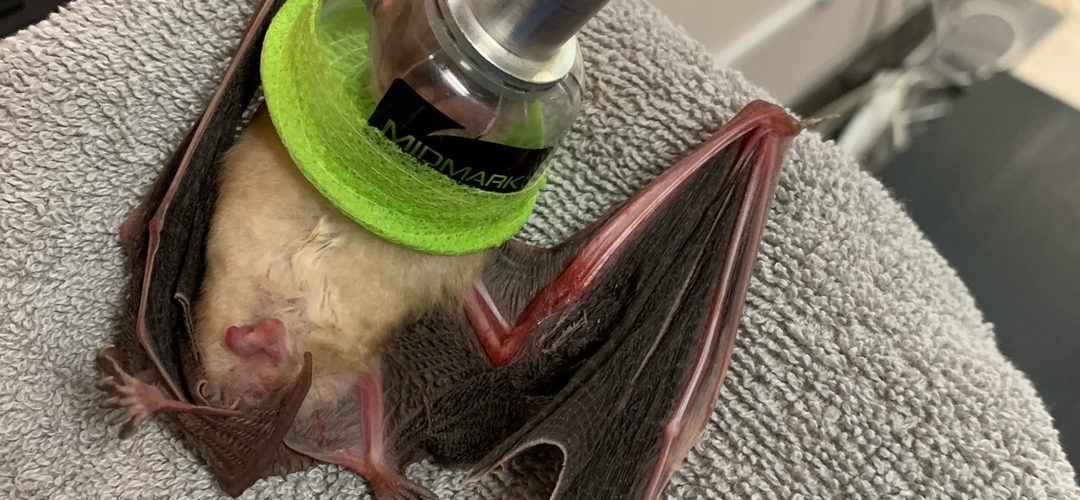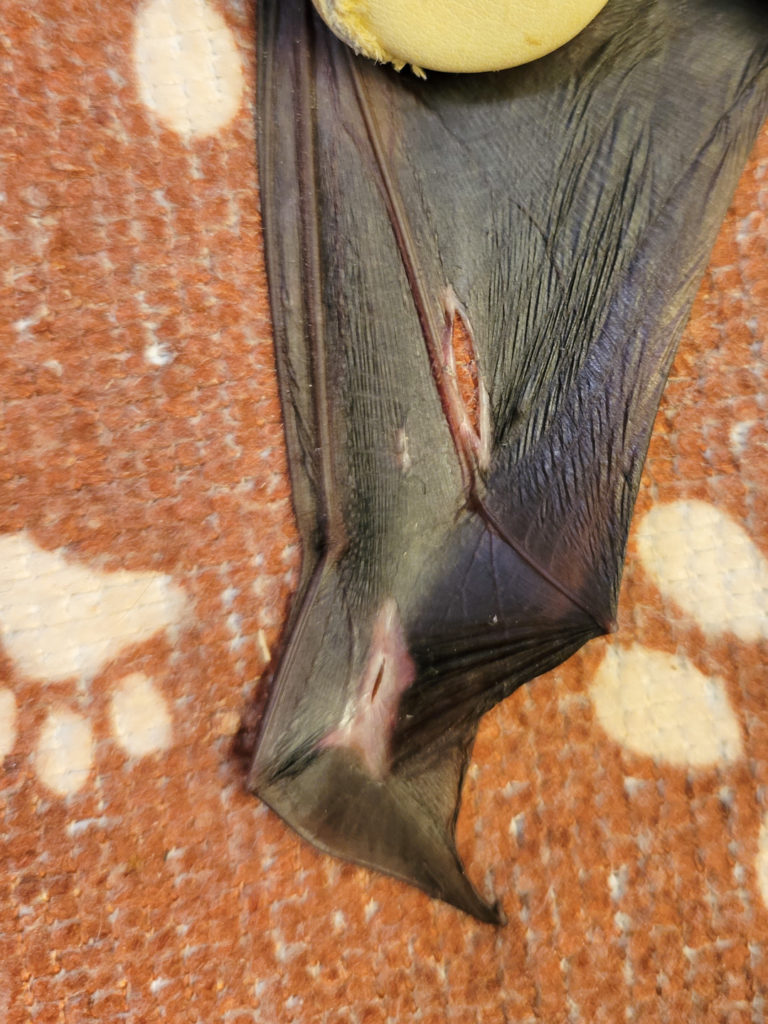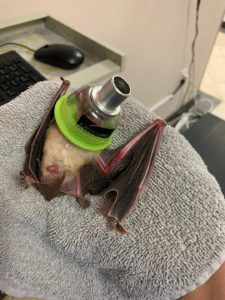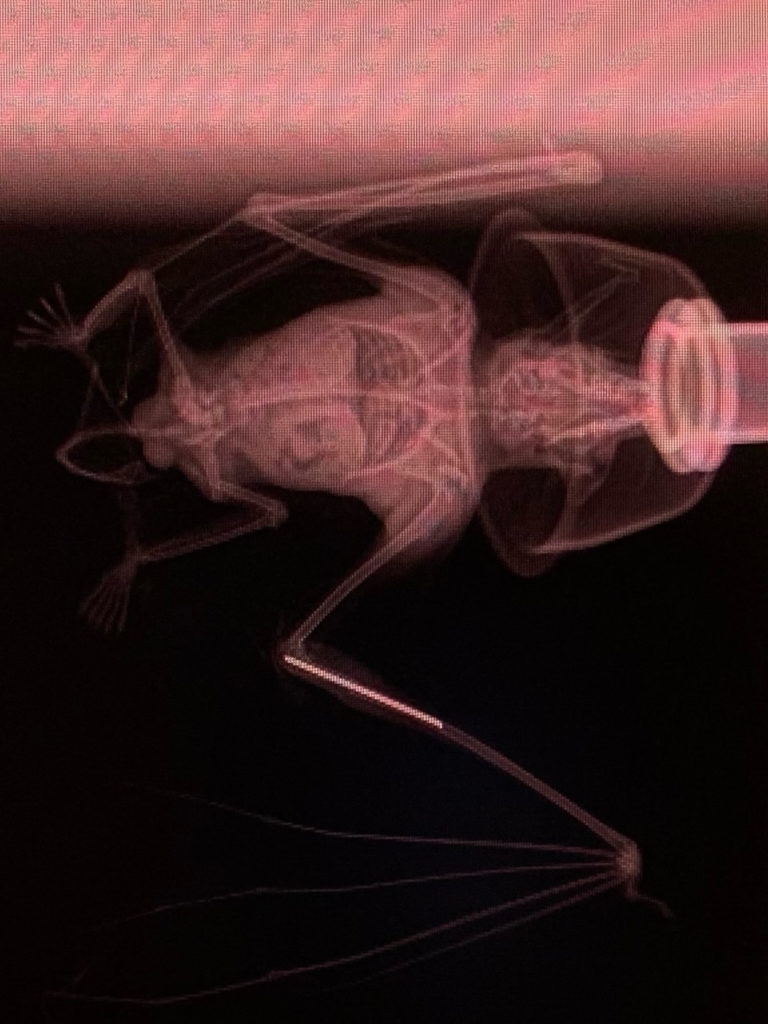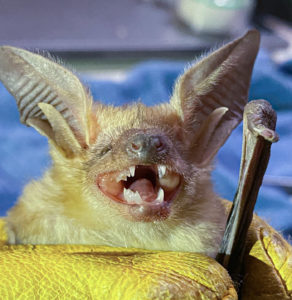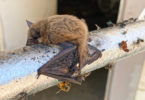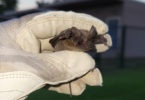When someone brings a sick or injured bat to NorCal Bats, our goal is to provide it with the appropriate care necessary to restore it to good health so that it can be released back to the wild. Let’s take a look at some examples of what we can do for bat injury rehabilitation.
Bat Wing Tears
A common problem that we see with injured bats a tears and holes in the wing membrane. The skin in a bat’s wing is tough and flexible (much like the skin of your eyelid), with plenty of blood vessels. If the tear is small enough, and the bat is in good health otherwise, often these tears will heal over time.
Here’s a photo of a Mexican free-tailed bat that was found in Davis in November 2022. He had tears on both wings, most likely due to the bat being caught by a cat (which we see quite often). The tears are healing well, but we’ll wait until next spring to release him. This time of year, not many insects are available since it is so cold.
Update: Here’s a photo of how the wing is healing, about mid December 2022. You can see the new tissue forming around the margins of the wounds.
Dealing With Broken Bones
There are times when we get a bat that has a broken bone. These can be difficult to deal with. Typically we see breaks in the wings, sometimes in the legs, and these all have to be fully functional for a bat to survive in the wild.
We are fortunate to be able to work with several veterinarians who can work with the small bones that you see in a bat. The primary one we work with is Dr. Sarah Anger of the Bird and Pet Clinic of Roseville, who provided us with some of these photos.
Let’s look at a case involving a Pallid bat that was passed on to us from Grass Valley through Gold Country Wildlife Rescue, in August 2022. He was found on someone’s back deck, and He had probably been caught by a dog. There was a broken bone in one of the wings, as well as in a leg.
For the broken bone in the wing, if it is one of the larger main arm bones it sometimes is possible to “pin” the wing. Dr. Anger inserted a very small metal rod through the core of the bone in order to align the two broken ends. This pin holds the two ends in alignment so they can heal properly. The fracture must be towards the middle of the bone, not close to a joint, and it must be a simple fracture (just two bone pieces).
Here’s a x-ray of the Pallid bat after the pin has been placed in the wing, below the body.
If you look closely you may be able to see the broken bone in the leg, just below the hip, above the pinned wing.
After surgery, the bat is treated with antibiotics.
In many instances a bat that is “pinned” in this fashion will be eligible for release once the wound has healed. It can take time – the bat has to be kept in smaller cages until it has healed well enough to be allowed into the flight cage, where it can build up strength and test out the repaired wing. In this case, the operation on the wing was a success and the wing was saved. Unfortunately, the leg couldn’t be repaired, and it had to be amputated. Given all these injuries, this bat won’t be able to fly well enough to be released. He is, however, doing quite well in captivity, hanging out with the other bats. In time this one should be able to become one of our “ambassador” bats, to be used in our education and outreach activities.
You Can Help!
Bat injury rehabilitation is expensive. Even with donated labor, bat surgery involves significant costs for anesthesia, antibiotics, and various medical supplies. Bats that have undergone surgery can’t be released until they’ve healed properly, and often they have to be held until the proper time of the year for them to venture out into the wild. The costs of care add up quickly! You can help with our rehabilitation efforts by visiting our how we are funded page and make a donation. Thank you!
If you have any questions about how we care for injured bats, please leave a comment below.

